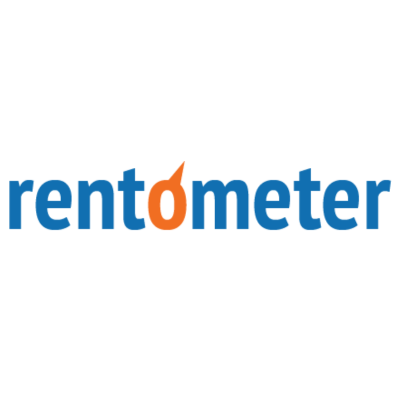Last Updated: February 2024

Rental real estate investing offers the allure of passive income, asset appreciation, and tax advantages. However, the path to successful property investment is paved with meticulous deal analysis, underwriting, and due diligence. These processes ensure that an investor is making an informed decision, grounded in concrete data and comprehensive assessment. A failure to conduct thorough investigations can lead to costly mistakes, diminishing returns, or unforeseen liabilities.
Financial Analysis (Underwriting)
Financial analysis, often referred to as underwriting, is the backbone of any real estate transaction. It provides a deep dive into the monetary metrics of a property, forecasting its potential returns and viability as an investment. By scrutinizing rental incomes, operating expenses, and financing conditions, investors can gauge the financial health of a deal.
Physical Property Evaluation
A property’s physical condition can significantly influence its value and operational costs. Physical property evaluation involves a detailed examination of the structure’s integrity, age, and the state of its essential components. This assessment ensures investors aren’t caught off-guard by hidden repair expenses or critical defects that might impact profitability.
Market Analysis
Understanding the broader market context is essential for any real estate investment. Market analysis offers insights into local rental rates, property demand, and neighborhood trends. This knowledge allows investors to position their property effectively within the market and anticipate potential challenges or growth opportunities.
Legal Due Diligence
Beyond the bricks and mortar, properties come entangled with a web of legal considerations. Legal due diligence ensures that investors are protected from potential legal entanglements, whether it’s land use restrictions, unclear property titles, or local tenancy laws. It’s the shield against unseen legal pitfalls that might jeopardize an investment.
Operational Due Diligence
Operational aspects of a property play a pivotal role in determining its long-term success as a rental. This involves examining potential vacancies, tenant turnover rates, and property management dynamics. Operational due diligence aims to provide a clear picture of what it truly takes to manage and maintain the property efficiently.
Environmental and External Factors
Properties exist within larger ecological and community systems, which can influence their value and operability. Assessing environmental and external factors includes understanding risks like natural disasters, environmental contamination, or shifting neighborhood demographics. Being aware of these externalities helps investors make informed choices and anticipate potential future challenges.
The #1 Rental Property Newsletter
Once a month, we send out an exclusive Rental Property Market Update with top stories, current mortgage rates, building products, and more. No spam and unsubscribe anytime.

Rental Real Estate Analysis Software & Tools
Rental Property Analysis FAQ
What is the Difference Between Deal Analysis and Due Diligence in Real Estate?
Deal analysis primarily focuses on assessing the financial viability of a real estate investment. It involves examining potential returns, costs, and risks associated with a property. Due diligence, on the other hand, is a broader process that includes a comprehensive review of all factors influencing the property, including legal, environmental, operational, and physical considerations. While deal analysis might tell you if a property is a good financial move, due diligence ensures you’re fully informed about all potential challenges and pitfalls.
Why is Underwriting Important in Rental Real Estate Investments?
Underwriting is a critical component of financial analysis that determines the creditworthiness of a property or investment. It involves a detailed examination of the property’s income potential versus its expenses, assessing whether it can meet its financial obligations, such as mortgage payments. The process helps lenders determine the risk associated with a loan and helps investors ensure the property is financially sound.
How Can I Accurately Evaluate the Physical Condition of a Rental Property?
To accurately assess a property’s physical condition, it’s crucial to conduct a thorough property inspection, ideally with a certified property inspector. They’ll examine the structure, foundation, roof, HVAC, plumbing, electrical systems, and more. Additionally, it’s essential to review any available property records for past repairs or issues and consider getting specialized inspections for concerns like pests or mold.
What Should I Look for in Legal Due Diligence for Rental Real Estate?
Legal due diligence encompasses several key areas: ensuring the property has a clear title without liens, understanding any zoning or land use restrictions, being aware of local landlord-tenant laws, and reviewing any existing lease agreements. Additionally, it’s crucial to check for any legal disputes or issues associated with the property or the seller.
How do External Factors Influence the Value and Potential of a Rental Property?
External factors can have a profound impact on a property’s attractiveness and profitability. Environmental concerns, such as flood risks or contamination, can affect insurance costs and usability. Additionally, broader market trends, neighborhood developments, and local community dynamics can influence rental demand, property values, and long-term growth potential.
More Real Estate Finance Guides
About the Author

Ryan Nelson
I’m an investor, real estate developer, and property manager with hands-on experience in all types of real estate from single family homes up to hundreds of thousands of square feet of commercial real estate. RentalRealEstate is my mission to create the ultimate real estate investor platform for expert resources, reviews and tools. Learn more about my story.
Disclaimer: The information provided on this website does not, and is not intended to, constitute financial advice. As such, all information, content, and materials available on this site are for general informational purposes only. Please review our Editorial Standards for more info.











